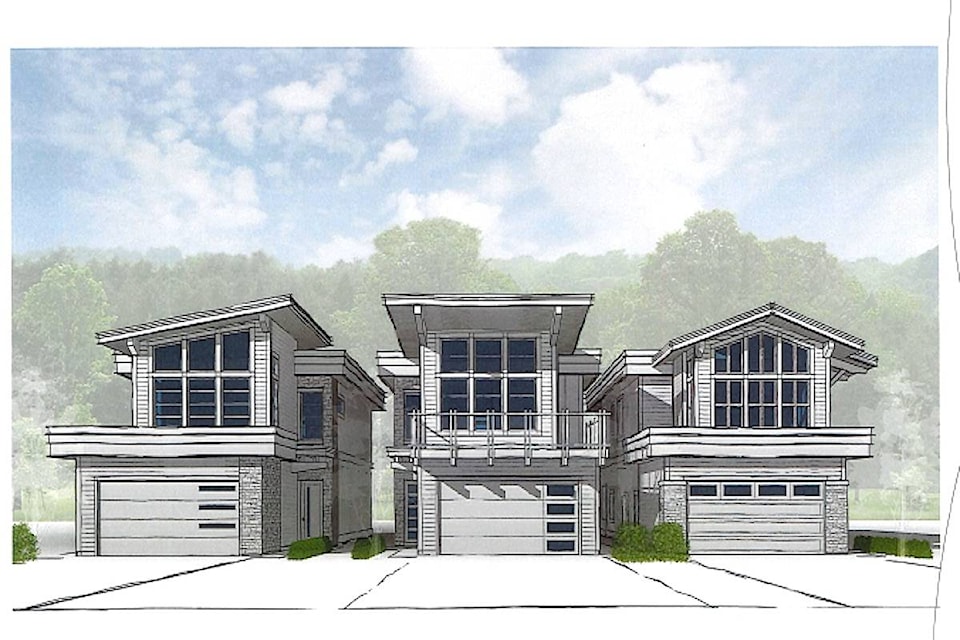A rezoning proposal for a three-lot subdivision at 45863 Berkeley Ave. was approved by city council at the Jan. 19 meeting after it met with a bumpy ride initially.
It was referred back to staff at the Jan. 5 council meeting with the goal of getting the developer to voluntarily restrict the height of the proposed homes to two storeys. That commitment was secured and the proposed rezoning came back before council on Jan. 19 and was given third reading and adoption.
The rezoning takes the property from R1-A (urban residential) to an R1-C (urban infill zone).
The renderings showed a trio of modern-looking homes two storeys high, and the 1,315-square-metre lot size is considered of “sufficient size” to accommodate the three-lot subdivision. Both the existing R1A and the proposed R1-C would allow maximum heights of up to 10 metres.
Neighbours who gave submissions to the public hearing had concerns about traffic, heritage preservation of the neighbourhood, impacts on the slough, and parking congestion.
Several of the letter-writers stated a preference that two homes be built on the one large lot, rather than three.
Some members of council said they had a hard time reconciling the potential for three-storey homes to be built on the large lot in the older neighbourhood in Chilliwack Proper. Others thought the lot was large enough to fit the three narrow houses.
“I always struggle with these,” Coun. Bud Mercer said about the Berkeley proposal during the council discussion on Jan. 5, and wondered if there was any way to “lock in” the developer to a two-storey height limit.
“I could support this plan for homes at two levels, but not three,” Mercer said.
City CAO Peter Monteith replied that council can’t impose a condition like that, and the only way would be to get staff to convince the developer to commit to limiting the height of the homes in this case.
The property backs onto the Hope River Corbould Park and the Hope Slough, and the existing home will be removed at the time of subdivision to make way for the three narrow homes proposed by Karvin Developments.
There are also plans for townhomes across the street from the proposed subdivision.
The staff report explained the height conundrum: “As the neighbourhood is predominantly characterized by a mix of mature yet well-maintained one and two-storey single detached dwellings, the future development of additional single detached dwellings within the newly proposed lots will maintain the built form and desired density of the area. However, a ground-entry home with living quarters above will likely be constructed in order to comply with the Flood Construction Level (FCL), creating a height differentiation with some of the surrounding lots. Both the existing Rl-A Zone and proposed Rl-C Zone allow for a maximum height of 10m. Given the FCL requirements, any new construction in the area is likely to maximize allowable height.”
Instead of giving third reading and adoption on Jan. 5, council voted in the end to send the proposal back to staff, with the idea of asking and ultimately obtaining the developer’s pledge to ensure the homes will not exceed two stories — even though three storeys would be permitted under the current and proposed zones.
READ MORE: Heritage home could face the wrecking ball
READ MORE: Height issues among concerns for Higginson
Do you have something to add to this story, or something else we should report on? Email:
jfeinberg@theprogress.com
@CHWKjourno
Like us on Facebook and follow us on Twitter.
Want to support local journalism during the pandemic? Make a donation here.
